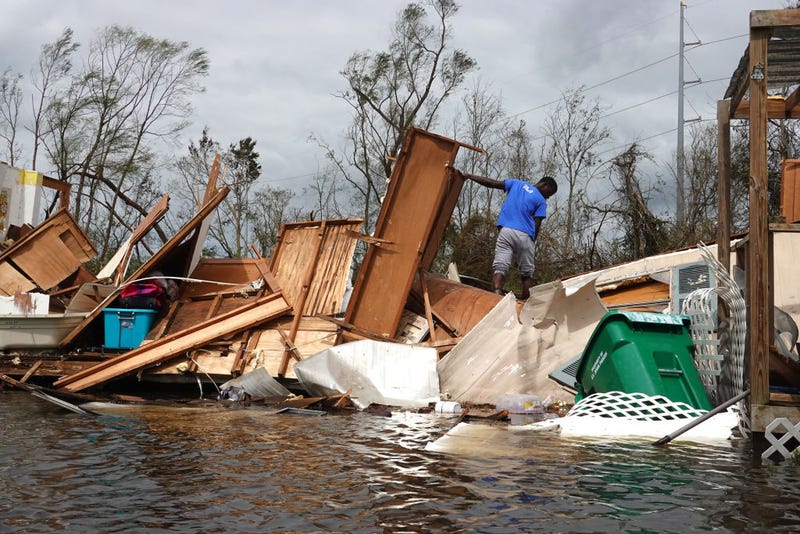
Are you struggling with getting what you consider to be proper compensation from your insurance company in the wake of Hurricane Ida’s destructive tour of Louisiana?
In a post on his Facebook page, attorney Doug Sunseri, co-host of WWL Radio’s “All Things Legal” advice program, wrote that many insurance companies set forth a set array of “knee-jerk defenses” to avoid covering damages, that too often policyholders are left at a loss about how to advocate for themselves, and that there is recourse.
Roof damage
It is undisputed the majority of roofs in the pathway of Hurricane Ida needs to be replaced instead of repaired/patched. It is recommended your licensed roofing contractor insert a statement in the estimate and/or invoice that the roof needs to be replaced and the testing/analysis utilized in arriving to such conclusion. This roofer’s statement may persuade the insurance company to pay for a roof replacement instead of a repair/patch.
Sheetrock, walls and ceilings
Most homeowners with roof damage also had corresponding water damage to sheetrock, ceilings, and walls. Sheetrock ceilings and walls are spongy, soft and absorbs water. Insurance adjusters often pay for merely repair and painting of sheetrock and ceilings instead of replacement. If your hurricane damaged ceiling and/or wall display bulging, sagging and/or bubbling, the water damaged sheet rock must be removed and replaced due to high moisture content and possibility of mold growth. Also, sheetrock may contain a high moisture content without visible manifestation due to water infiltration. If the sheetrock is not replaced but simply sprayed with disinfectant and painted, such will be a recipe for mold growth and other further complications. Therefore, the water damaged sheet rock must be removed and replaced.
Mold
On occasion, insurance companies attempt to deny payment for water damaged walls and ceilings based on the “mold” exclusion’. The “mold” exclusion does not apply for removal of water damaged walls and ceilings which later develop mold.
The mold exclusion only applies when mold travels to walls which are not water damaged.
Seepage
Hurricane Ida caused water infiltration through windows and doors arising from the wind-driven rain. Many claims’ adjusters have attempted to disallow damage based on the “seepage” exclusion. The “seepage” exclusion should only apply for moisture gradually entering a pre-existing opening over an extended period of time. The “seepage” exclusion does not apply for water infiltration from hurricane winds caused by vibration and compromise of the seal to doors and windows.
Water-damaged wood floors
Water is a hardwood floor’s worst enemy. Wood flooring is not resistant to water.
Wood floors will become damaged if water is allowed to soak into it. Signs of permanent damage are as follows:
-Staining and discoloration
-Cupping and buckling
-Lifting nails
-Lifting floorboards
-Mold growth
Yet, many insurance companies will only pay for sanding down, repair or patching if the wood floor is saturated by water/rain. In such case, it is undisputed the insurance company is required to pay for a full replacement of the entire continuous area of the damaged wood floors.
Also, many adjusters attempt to state that the water damaged portion of the wood floor could be replaced while the undamaged wood flooring remains in a mismatched presentation. Again, the insurance company is required to replace the entire continuous area of damaged wood floors as opposed being required to having 2 contrasting and unmatched areas featuring the replaced wood floor and the undamaged floor.
A/C unit
Hurricanes wreaks havoc on air conditioning systems. Insurance companies are reluctant to pay for replacement for your hurricane damaged AC unit. Often, the signs of AC damage aren’t immediately evident. Signs of a damaged AC unit is as follows:
-AC Not Cooling
-AC Making Weird Noises
-Dirt and Debris in the Condenser
-Electrical Problems at the Breaker Box
-Impaired Capacity Due to Power Surge
-Condensing Unit Shifted on Pad
-Water in Compressor, Electrical Compartment and Fan Motor
The useful lifespan of a hurricane damaged AC is exponentially shortened. In such case, the AC should be replaced and not merely repaired since the AC unit has terminal and incurable illness.
In addition, Sunseri says if you request a readjustment and go multiple days without a response, you should call back and ask for a supervisor who has the authorization to address your concerns. If you need to escalate the matter further, you can submit a complaint with the Louisiana Insurance Commissioner’s Office or hire an attorney.
You can hear Sunseri live and ask him your own questions on WWL Radio every Tuesday and Wednesday night from 8-10pm.

